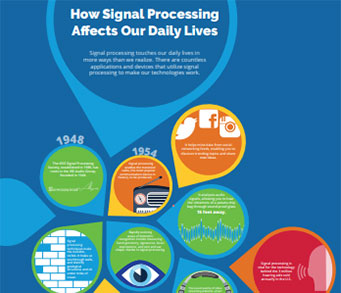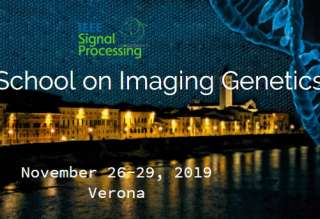SPS Feed
Top Reasons to Join SPS Today!
1. IEEE Signal Processing Magazine
2. Signal Processing Digital Library*
3. Inside Signal Processing Newsletter
4. SPS Resource Center
5. Career advancement & recognition
6. Discounts on conferences and publications
7. Professional networking
8. Communities for students, young professionals, and women
9. Volunteer opportunities
10. Coming soon! PDH/CEU credits
Click here to learn more.
The Latest News, Articles, and Events in Signal Processing
| Name | Description |
|---|
| SPT | Signal Processing Theory
|
 Editor-in-Chief:
Editor-in-Chief:
Brendt Wohlberg
Los Alamos National Laboratory, USA
Email EIC
This fully open access journal will publish high-quality, peer-reviewed papers covering the enabling technology for the generation, transformation, extraction, and interpretation of information. It comprises the theory, algorithms with associated architectures and implementations, and applications related to processing information contained in many different formats broadly designated as signals. Signal processing uses mathematical, statistical, computational, heuristic, and/or linguistic representations, formalisms, modeling techniques and algorithms for generating, transforming, transmitting, and learning from signals.

Algorithms for Event-Driven Camera Analysis
School of Computing, Engineering and Mathematics
Scholarship code: 2019-089

Educational Testing Service (ETS), with headquarters in Princeton, NJ, is the world’s premier educational measurement institution and a leader in educational research. With more than 3,400 global employees, we develop, administer and score more than 50 million tests annually in more than 180 countries at more than 9,000 locations worldwide.
November 26-29, 2019
Registration Deadline: November 1, 2019
Location: Verona, Italy
Website

P2IRC Computer Science Research Positions
Posted: August 2, 2019
Lecture Date: August 26, 2019
Chapter: Hamilton
Chapter Chair: Jun Chen
Topic: A Joint Attention Decoding and Adaptive
Beamforming Optimization Approach for the Cocktail Party Problem

Applications are invited for a postdoctoral position in the area of machine learning and data analytics for human performance understanding and prediction, a collaborative effort at Tufts University among the Department of Electrical and Computer Engineering, Department of Computer Science, the Center for Applied Brain and Cognitive Sciences (CABCS) at Tufts University and the U.S.

The Signal Processing and Knowledge Technology research groups at the Universität Hamburg are hiring a research associate (PhD candidate) for the project "Ego-Noise Reduction for Interactive Robots".
This paper presents a time-frequency masking based online multi-channel speech enhancement approach that uses a convolutional recurrent neural network to estimate the mask. The magnitude and phase components of the short-time Fourier transform coefficients for multiple time frames are provided as an input such that the network is able to discriminate between the directional speech...
The seven papers in this special issue cover various far-field speech processing techniques including speech enhancement, separation and recognition, and their integration. In most of the methods, multichannel speech processing is an essential component to achieve state-of-the-art performance.
In this paper, we propose a coding tree unit (CTU)-level rate control scheme from the perspective of SSIM-based rate-distortion optimization to improve the coding efficiency. First, we establish the SSIM-based rate-distortion model based on the divisive normalization scheme, which characterizes the relationship between the local visual quality and the coding bits.
With the rapid popularization of mobile intelligent terminals, mobile video and cloud services applications are widely used in people's lives. However, the resource-constrained characteristic of the terminals and the enormous amount of video information make the efficient terminal-to-cloud data upload a challenge.
Multimedia streams consume a significant chunk of the consumer Internet traffic exchanged and will continue to do so due to the ever-increasing connection among people, businesses, and industries. To cope with the deviation of the Internet's intended use, unreliable underlying infrastructure, and best effort protocols while leveraging existing technologies...

Online Applications only: http://emea3.mrted.ly/28n6x
The University of Luxembourg is a multilingual, international research university.
Pages
SPS Social Media
- IEEE SPS Facebook Page https://www.facebook.com/ieeeSPS
- IEEE SPS X Page https://x.com/IEEEsps
- IEEE SPS Instagram Page https://www.instagram.com/ieeesps/?hl=en
- IEEE SPS LinkedIn Page https://www.linkedin.com/company/ieeesps/
- IEEE SPS YouTube Channel https://www.youtube.com/ieeeSPS












